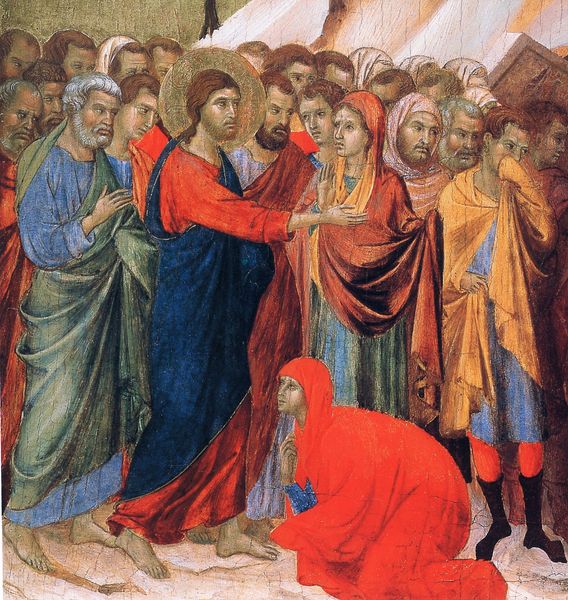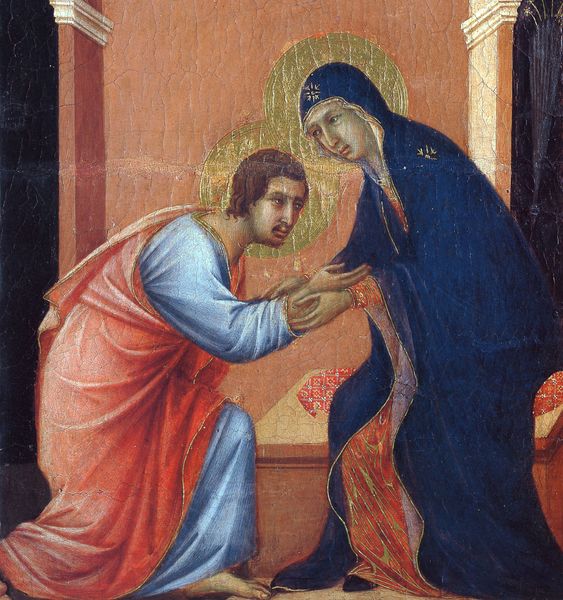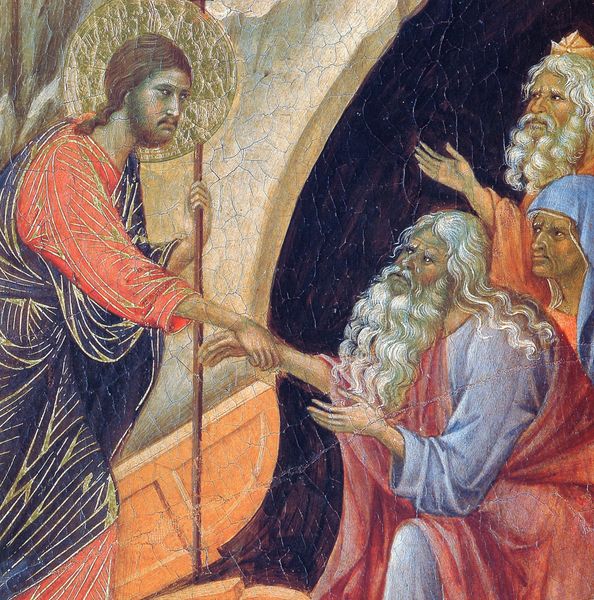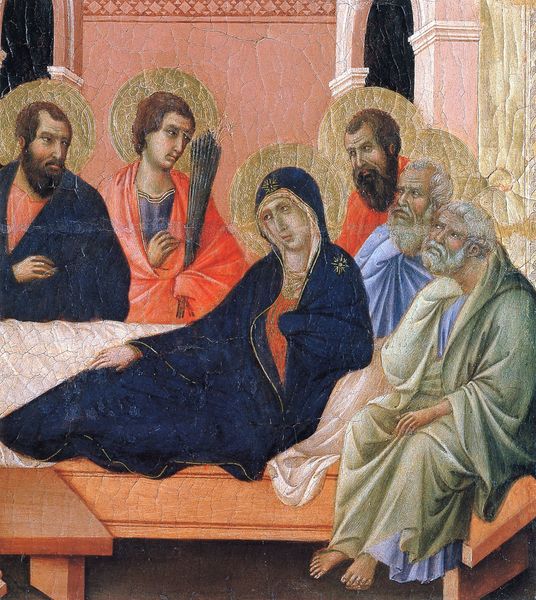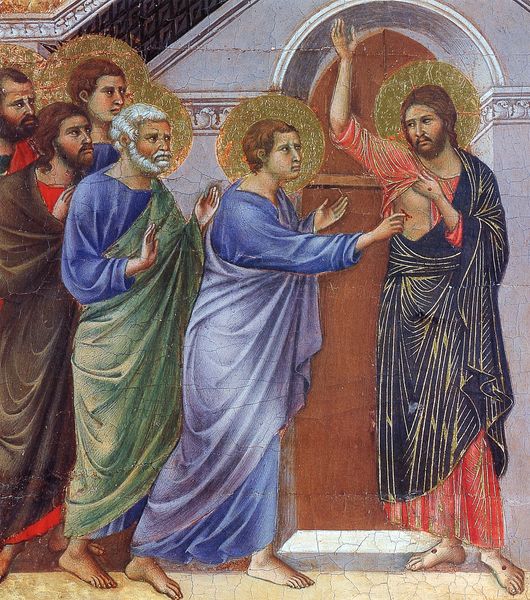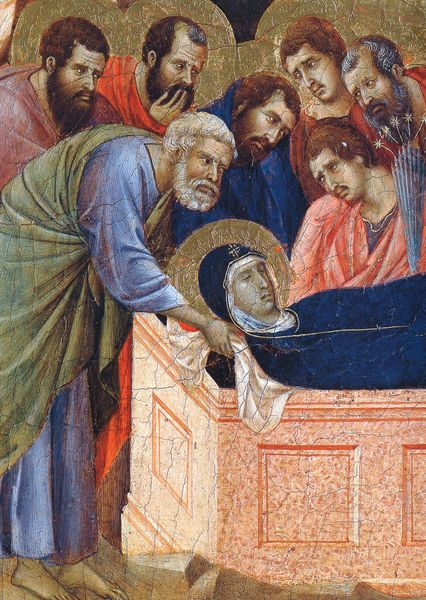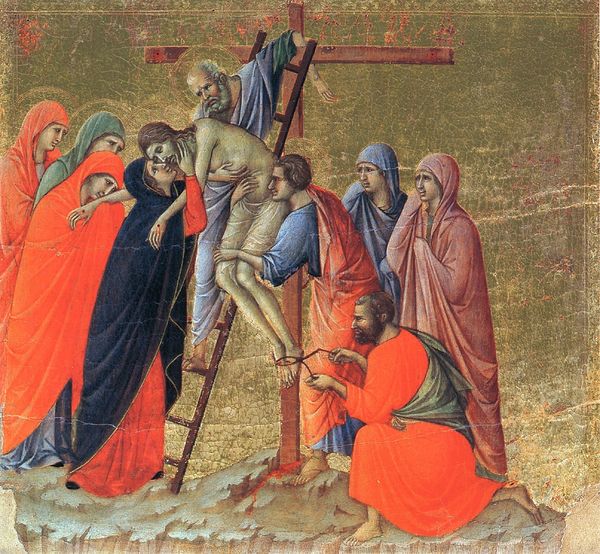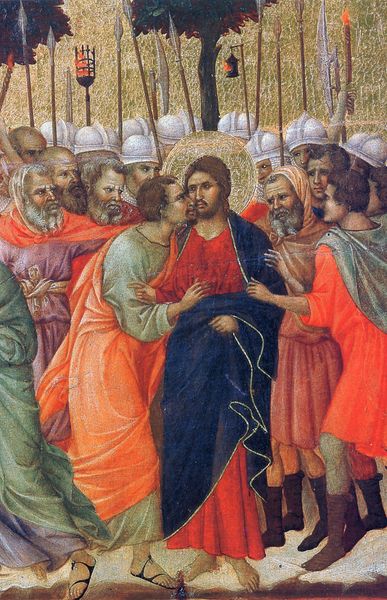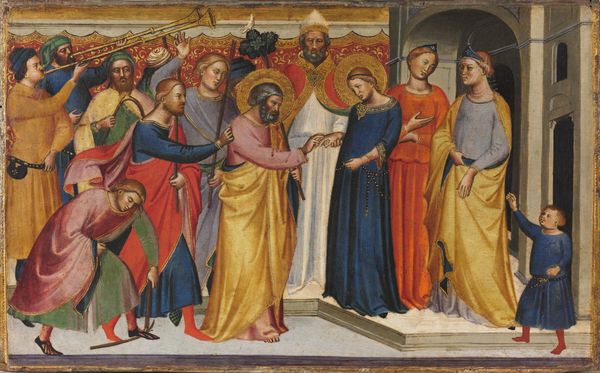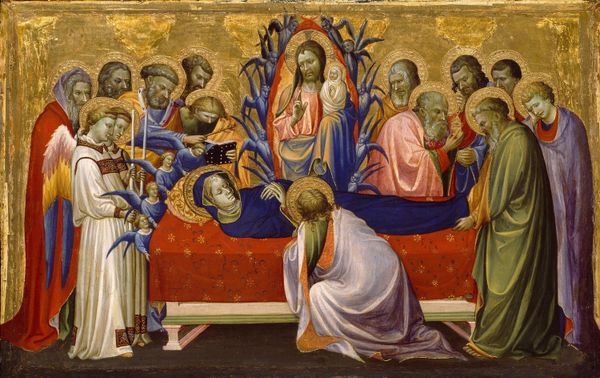
tempera, painting
#
portrait
#
medieval
#
tempera
#
painting
#
gothic
#
sienese-school
#
oil painting
#
christianity
#
history-painting
#
facial portrait
#
italian-renaissance
#
portrait art
#
virgin-mary
#
christ
Copyright: Public domain
Editor: Here we have Duccio’s "Crucifixion (Fragment)," made with tempera around 1311. There's a real sense of sorrow emanating from the faces; everyone seems connected yet isolated in their grief. What compositional elements strike you most in this fragment? Curator: Note the arrangement of figures. They're compressed into the pictorial space, aren't they? See how Duccio manipulates color – the intense reds against the somber blues and greens – to create a visual hierarchy and emotional resonance. The figures are carefully positioned and draped to contribute to an internal rhythm. Editor: So, the colors aren't just decorative but serve a specific function? Curator: Precisely. And look at the line work – sharp and defined, creating clear separation. Consider too, how the halos operate within the piece. They’re not simply symbols of divinity but are tangible forms that interact with the space. Does the artist employ innovative visual tactics, or conform with standard practice? Editor: I hadn't considered the halos as part of the composition itself. The piece’s use of emotion-conveying colour in what's meant to be such a symbolically spiritual space is intriguing. Curator: Indeed. By looking at the interrelations between the depicted elements, we can understand how meaning is constructed and perceived. So many compositional elements are here merely for their aesthetic function. Editor: I'll definitely look at the piece with this new perspective on form. Curator: Excellent. Every aspect contributes to the overall aesthetic and communicative power of the artwork.
Comments
No comments
Be the first to comment and join the conversation on the ultimate creative platform.
